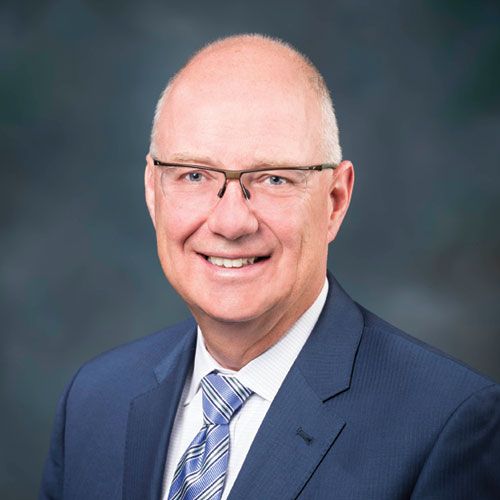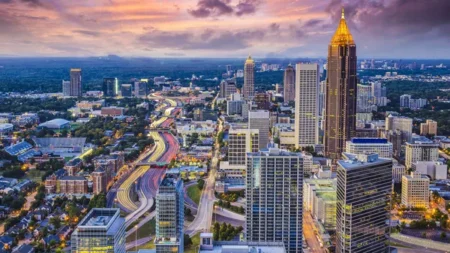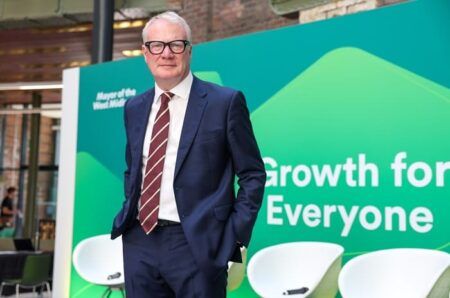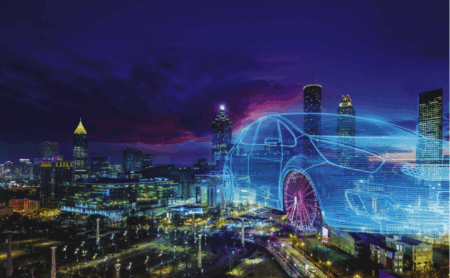Kirk Steudle has a unique 360-degree view of the ITS industry, having worked over the course of his illustrious career as a DOT director, private sector executive and now as an independent consultant. We get his deep insight into the state of play for transportation technology as the 31st ITS World Congress approaches
With over a decade of experience leading one of the USA’s most innovative DOTs – Michigan Department of Transportation – from 2006 to 2018, and extensive involvement in the ITS community, Kirk Steudle brings a unique perspective to the current transportation landscape.
Now working as an independent consultant, Steudle has witnessed multiple administrative changes and technology cycles, providing valuable insights into both the constants and variables in transportation policy and innovation. Transitioning from public sector leadership to independent consulting has provided Steudle with both opportunities and constraints. “I certainly have the freedom to say what needs to be said,” he explains. “It’s very liberating to say, here’s what you need to hear, whether you like it or not.”
This independence allows him to provide unbiased technology assessments. “I have no conflict of interest with any of the technology vendors, so I can be very honest. Some of my former colleagues and DOT directors look for that, because they know I’m not connected to any particular technology.”
The downside, however, is reduced direct implementation capability. “When I was a DOT director, I could see a solution and push to get to that solution, and you had the abilities, the resources and all the means to make that happen. Now if I see that, I need to convince somebody else.”
Live projects
Steudle is involved in various projects, including a National Cooperative Highway Research Program (NCHRP) Moonshot Project, which examines “collective and individual actions that states can take towards a national vision for transportation”
Each state has its own priorities within the Moonshot Project, but one of Steudle’s personal highlights is the interstate connectivity project, which brings together a coalition of states led by Nevada’s Tracy Larkin Thomason. Its aim is to connect all I-80 states from California to New Jersey. “They’re working towards sharing information across state lines, particularly for emergency events, weather events,”
Steudle explains, citing recent examples where advance warning systems could have prevented trucks from being stranded on closed interstates. Steudle has also been impressed by Georgia’s innovation with fiber-optic installation, which has implemented a public-private partnership to install this infrastructure along interstates, using a design-build-finance-maintain-operate model. “The DOT is going to pay for the installation and will get ownership of some of those strands of fiber, but the contractor will be responsible for installing it, operating it and maintaining it into the future,” explains Steudle.
Meanwhile Steudle also notes that Texas is developing an autonomous trucking corridor between the cities of Houston and Dallas, on I-45, for freight deliveries, a project that will develop safety and notification technologies.
Beyond traditional transportation technology, states are exploring energy generation within right-of-way. Georgia DOT’s partnership with The Ray organization for solar deployment along I-85 has been generating both electricity and revenue for years, inspiring other states to implement similar projects. “Michigan and Minnesota raised their hands and said, ‘We want to work through that process too,’” says Steudle.
These initiatives represent what Steudle sees as smart approaches to public-private partnerships that don’t rely on tolling. “Georgia’s public-private partnership does not involve tolls. It’s leveraging another source of revenue,” he says.
Steudle predicts that with the ITS World Congress landing in Atlanta, in The Ray’s home state of Georgia, representatives from the testbed will be sure to be on hand, possibly inspiring even more states to take up their ideas. Turn to page 38 for a guide to the highlights of this year’s ITS World Congress
“I have no conflict of interest with any of the technology vendors, so I can be very honest. Some of my former colleagues and DOT directors look for that”
What’s next?
ITS is an industry defined by technology, so identifying trends is important for smart deployment – Steudle believes that lidar refinement is particularly promising. “The fine tuning of lidar, and the further development of that, will help to drive the cost down,” he says. “I think that’s going to be the next big jump.”
Regarding AI, Steudle is both enthusiac and cautious. “We don’t know what AI can do yet. We can dream about it, but we don’t know what we don’t know yet,” he says. His concern centers on data security and deployment safety: “We need to be careful, particularly where our data is going, and what it’s being used for, and how do we deploy it in a safe fashion.”
In Steudle’s experience of the new technology so far he has found that states are approaching AI carefully, with some prohibiting its use entirely while others are “dipping their toes in very cautiously.”
As with other technologies, including autonomous vehicles, Steudle believes AI will follow the typical Gartner Hype Cycle. “The hype is going to peak and then we’ll come back down into what they call the Trough of Disillusionment,” he says. “And then eventually it will become something that’s really useful.”
But, while new technology can be exciting, Steudle emphasizes the importance of maintaining focus on the fundamentals of improving safety and reducing congestion. Even in polarised political times, he believes these principles can be inspiring for all.
“Transportation has been a bipartisan issue forever, because there aren’t any red roads or blue roads – Republican roads or Democratic roads,” he says. “Fundamentally, people understand transportation is about moving people and goods, and that’s what you’ve got to get to.”
With the ITS World Congress approaching in Atlanta, Steudle anticipates AI will dominate discussions, but his long-term view which has seen him working in the public and private sectors across multiple administrations in Washington suggests the most impactful innovations will be those that solve real problems rather than simply showcase technological capability.
Listen to an extended version of this interview on the Transportation Podcast from TTi
This article first appeared in the September issue of TTi





